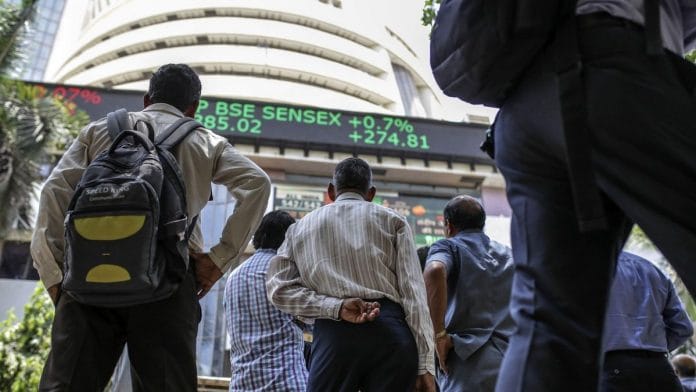Singapore: India’s biggest bank overhaul in decades to merge state-run lenders beset with bad loans and low capital hasn’t convinced investors to increase holdings of the shares.
Fund managers including Aberdeen Standard Investments Ltd. and JPMorgan Chase & Co. are shying away from increasing their positions in government-owned lenders. As well as poor asset quality at the banks, they cited uncertainty about the mergers’ time-line.
A prolonged shadow-banking crisis and hurdles in bankruptcy rules have left India holding the world’s worst bad-debt pile. Seeking to spur lending needed to revive economic growth from a six-year low, Prime Minister Narendra Modi’s government said Aug. 30 that it plans to merge smaller banks to create four new lenders that would hold more than half of the Indian banking industry’s assets.
“State run banks do have a large asset-quality burden,” said Rukhshad Shroff, who oversees more than $660 million in India equities at JPMorgan Chase & Co.’s asset management unit in Hong Kong. “Many also have very little capital. There is some evidence to show that digesting large mergers ends up being more complicated than was originally expected.”
Mergers at a time when economic growth is at its slowest pace in six years “will prove distracting” to state-owned lenders, according to Kristy Fong, who helps oversee $669.6 billion globally in equities as Asian investment director at Aberdeen Standard Investments Ltd. in Singapore. There is also a “significant gap in quality between the better-run and better-capitalized private sector banks and their state-run peers,” she said.
The firm owns Kotak Mahindra Bank Ltd. among top holdings in an India-specific equity fund, according to data compiled by Bloomberg.
The NSE Nifty PSU Bank Index, comprising 12 state-owned banks, has added 1.5 per cent since the Aug. 30 merger-plan announcement, trimming its loss from this year’s high on 2 April to 27 per cent. Fitch Ratings on 11 September said in a note that the proposed consolidation of state-owned banks should be positive in the long-term for the industry but it must be accompanied by adequate capitalization and governance improvements.
The long-term benefits include stronger governance, better risk management and cost efficiency, according to U.S.-based Principal Global Investors. “Improvement in the governance structure should translate into long term-benefits on multiple fronts, including asset quality,” said Ravi Gopalakrishnan, head of equities at firm’s asset management unit in Mumbai. He still prefers private lenders given the uncertainties surrounding the mergers.
For Mumbai-based stock advisory firm Target Investing, the mergers won’t solve the problem of slowing credit growth and rising bad loans, said the firm’s founder Sameer Kalra, who has been reducing positions in government banks.
India’s merger plan is “yet another egregious display” of its inability to resolve bankruptcies in a timely and efficient manner, said Nikhil Bhatnagar, head of global capital markets at Auerbach Grayson & Co. in New York.
“Logically, when something bad gets merged with something really bad, the net result is definitely worse than the present,” Bhatnagar said. “There are no good banks among the state lenders. There are only bad banks and really bad banks.” – Bloomberg
Also read: Unsecured loans are not the answer to the credit crisis at India’s big banks






